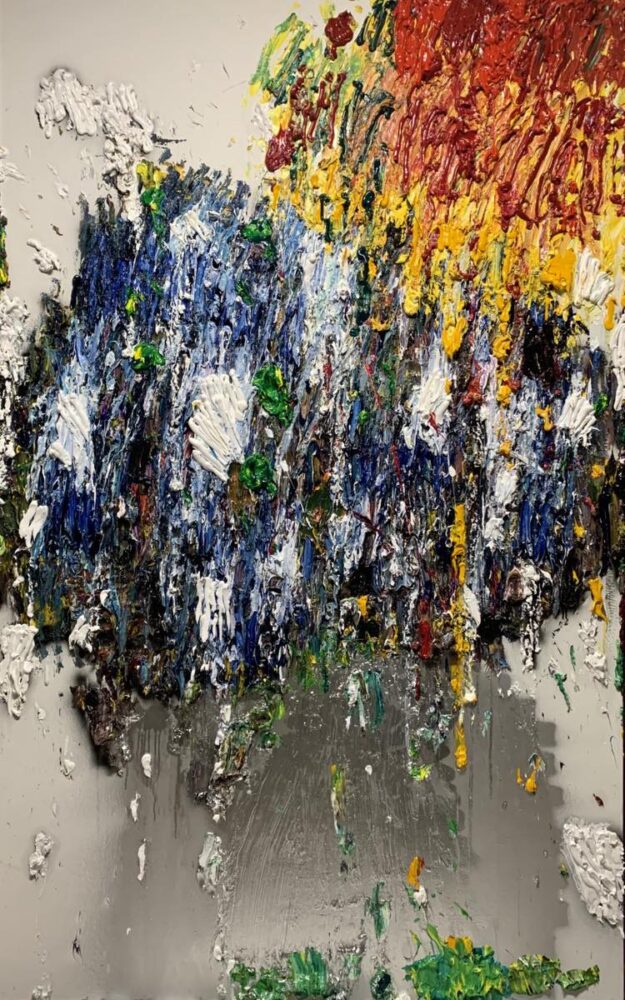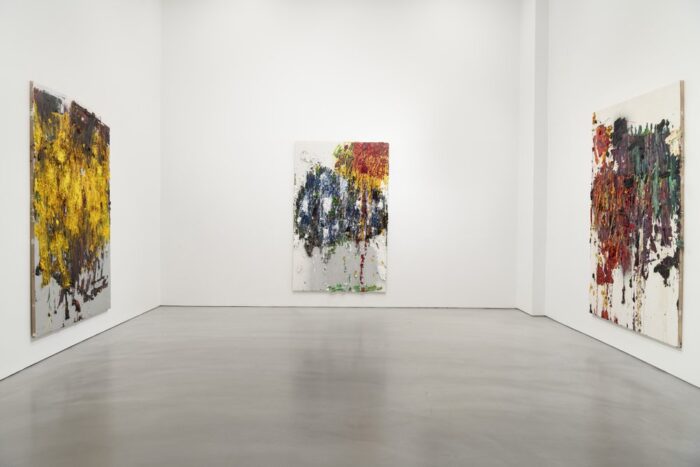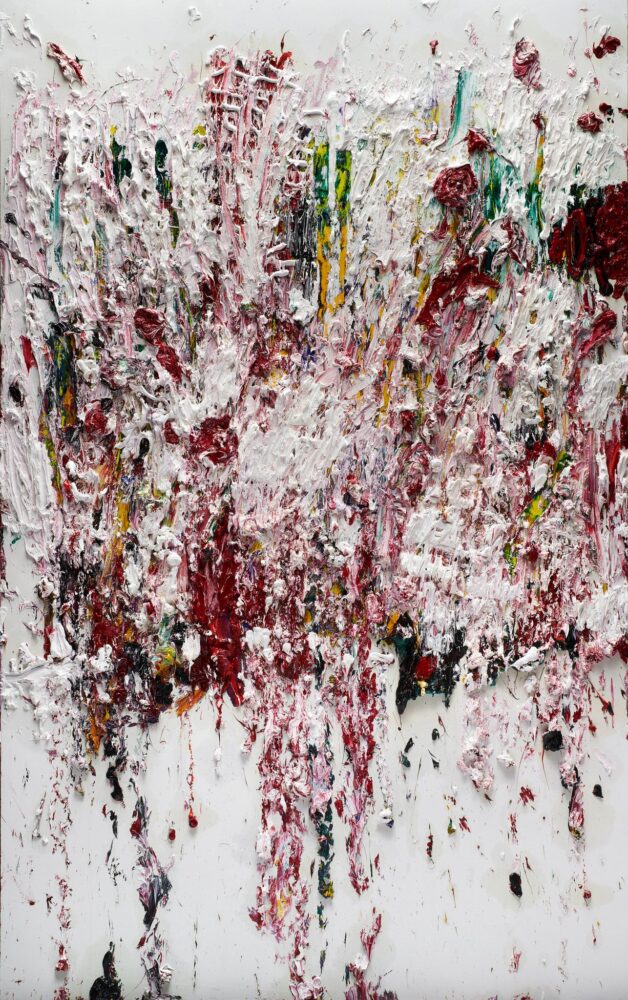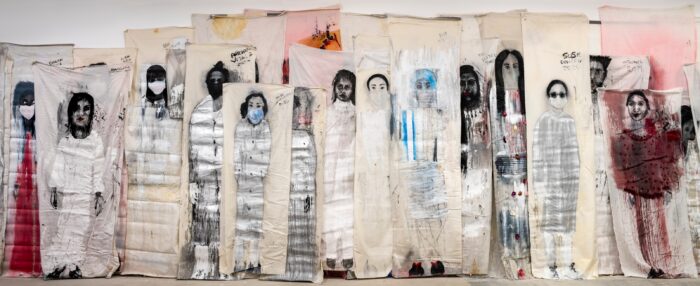
Jamie Martinez: Can you tell us about your early background and the experiences that led you to pursue your love for painting? Were there specific influences or moments in your life that inspired you to become an artist?
Rodney Dickson: I was born in the seaside town of Bangor, Northern Ireland in 1956, both my parents were school teachers and my brother was a used car dealer. Growing up in a small town there was not a lot to do, especially in those difficult times of “the troubles”, the options ranged from terrorist to car mechanic, so I chose neither and instead rode motorcycles.
I was not in an art family and becoming an artist was not on the list. Therefore, I did as little as possible, jobs that lasted a week, going through life a little out of step. Concerned for my future, my mother declared, the only thing she ever saw me do was draw and paint, so she sent me off to art school in Liverpool in 1979.
From day one there, I knew I would be an artist, I found other like-minded people and making art such a magical thing. My question from then on was how can I survive as an artist as I could not expect to make money. Well, there it is, the same problem most artists face and as we know, one survives in whatever way one can, a wee bit of this and a wee bit of that.
Early influences began at Liverpool Art School when I was lucky enough to be there at the time of Jeff Nuttall as Head of Fine Art and Mike Knowles as Head of Painting. For the few years the college could tolerate him, Jeff set up a wild ride for us students, a wide-ranging, open, creative environment. I remember him saying that a Fine Art Department should always be in a state of flux and as an artist, one should never know entirely what he or she is doing. The preference should be to always be moving forward, breaking new ground, and remaining curious. Mike is a great painter, conscious of the importance of painting in life, and his charisma was infectious to those of us who responded to that kind of thing. He and I have remained best friends and artistic comrades to this day. I am still in contact by email frequently with Mike and if I had a mentor, it would be him.
I have always been fascinated by nature, by space, by outer space, and curious about science, religion, and the mysteries of our existence that are beyond our intellect. For example, even before I was an artist, I would spend time alone, staring out to sea, overwhelmed by the power and vastness of it, by infinite space, and wondering what is out there. When I began to look at art, I reacted similarly to Vincent Van Gogh. Later a few more were included like Marc Rothko, Edward Hopper, Svay Ken and contemporary artists such as Elizabeth Magill, Kim Sooja, and James Turrell, or some younger ones like Maya Hewitt and Yu Matsuoka.
So, when I started creating stuff, it was not so much about wanting to be an artist or to make art; it was about looking for a way to create this magical experience, and painting seems to have become my method of choice.
My wife became clinically depressed and killed herself on March 26th, 2016. This had a devastating effect on me. Not only did my life change that day, my art did also. In the first few days, I felt I would never paint again, but quickly, I decided it was more important than ever to bring new life into the world.
Since then, my work has been a wee bit lighter, brighter, and showing some of the white background, letting the painted area float within the space and allowing it to breathe. I am not entirely sure why but it is connected to the loss of Juliet.

JM: Sorry to hear about your loss. I can’t imagine what you went through. In the paintings currently on display at Nunu Fine Art New York, I sense the vastness that nature and outer space inspire in you. Could you describe how your process begins when you start a new painting or series?
RD: I usually start, especially with the large ones, at the pristine whiteboard, and this goes for days: it is beautiful, perfect, why spoil it? It is intimidating in the beginning, and I often think I can never paint again, hopelessly searching for a way in. After some time, I get a feeling for the space and then begin to add a color, perhaps followed by another period of staring until suddenly I am at one with it and rush to continue. From there on, it builds its own momentum, and the painting begins; it takes on its own creation, and I respond to what is happening subconsciously. Adding paint, scraping off paint, creating and destroying, always searching for something genuine. Philip Guston said something about leaving the studio, mentally, when all clicks into gear, it is a bit like that.
JM: Yes, it is my favorite quote from Guston. Do you often work on multiple paintings simultaneously?
RD: In the past, I have worked on more than one painting at a time but mostly in recent years, I have worked on one at a time. Some years ago, I was working on large paintings for up to a year, and in that case, I did work on a few during that time. These days, I don’t do that and would prefer to get it done more quickly to retain the original spark from the first moments; these may take up to 3 months, but of course, nothing can be predicted, and it takes as long as it takes.
How do you discern when a painting is genuinely finished—is it a conscious decision, or does the artwork itself dictate its completion?
RD: Of course, the big question in painting is when it is done. While motorcycle racers talk about trying for the perfect lap, most painters are constantly searching for their best painting—their masterpiece. In a way, I could work only on one painting for all of my life, and I would, in fact, be happy to do so. It would never be finished. But since I make more than one, I must decide.
All of my paintings have layers of potentially finished paintings beneath the surface. Every time I paint, I repaint the whole surface in each session. I do this because I want to be in that moment, and as we know, life changes every second; therefore, I am constantly thinking, is it finished? The reworking is a search for the essence of it, a bit like Italians reducing their pasta sauce.
I sometimes think of my paintings as being some natural phenomena not yet seen in the world. Structurally, I want to build form and strength into them and nurture them until they can take on their own life and exist in the world without me. The most vital thing is when I feel that sense of mystery, magic, it has its own place in nature, this is why I paint. That feeling is hard to describe. I know it when it happens, and yes, the artwork dictates its own completion.

JM: Could you elaborate on the inspiration and techniques behind your drawings?
RD: In my opinion, everyone should draw, whether they are artists or not, as it is the best way to interact with nature and one’s surroundings. As a painter, it is my basic activity.
When I travel, I try as much as possible to draw the new things I discover there; it adds to the excitement. At home, I draw my friends but my favorite subject is open spaces. For the last few years, I have been chilling out at the Rockaways in my car or motorbike at nighttime and drawing the sea and sky in the dark from the beach. It is an excellent subject; in the dark, all one can see is infinite space and magical light. The subject is overwhelming; to be there and soak it up would be wonderful, and to try to draw it, to attempt to find the magic and put it into the work, is an experience that is out of this world. Of course, it is nearly impossible to do that, but there is no reason not to try.

Downstairs at the gallery, you are showing an installation of portraits displayed throughout all the walls. Can you elaborate on the story behind this work and whether it relates to the work upstairs?
RD: I started these paintings in July 2019 while working in the mountains of Shanxi Province, China. I realized I was making friends whom I would most likely not see again after leaving there. So, I decided to paint their portraits and bring them home with me. That village is very remote and there are no art materials there, so I painted on white bed sheets with mainly black and white paint. After that, I taught in Kurukshetra Art College, India, and continued to paint my students there. Of course, after returning to New York, I painted my friends here.
In 2020, Covid came, and I could not get models to visit my studio anymore, so I resorted to requesting people to email me their selfies and, as was the sign of the times – wearing a mask. Therefore, about one-third of the 120 paintings in the exhibition show masks. From the beginning of the project, my idea had always been to exhibit them as a group, layered, overlapping on all four walls of a space to resemble a crowd of people. As is the case with a crowd, only the ones at the front are visible, but the presence of the others is felt.
The difference between figurative and non-figurative paintings is only superficial. It is the mood the work creates that is vital, and as such, I do not see a difference in the essence of this work and the non-figurative paintings upstairs. It is not important how you get there; what you end up with is what counts—it’s not the ride; it’s the rider.

